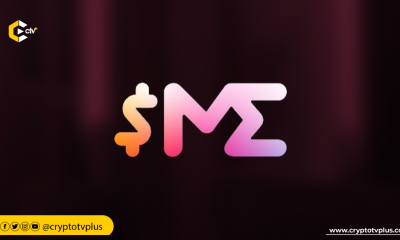Education
A look into interoperability in the blockchain space

Interoperability in the realm of blockchains refers to the ability of different blockchains to freely exchange data with one another. Cross-chain interoperability enables smart contracts on various chains to communicate without the need to transfer tokens between chains.
For instance, when assets, services, or transactions are recorded on one blockchain, they can be represented on another blockchain through appropriate interoperability solutions. This means that applications can interact with any asset or service, irrespective of the blockchain they are hosted on.
Why is interoperability important?
Presently, blockchains face a situation similar to the early days of the internet: numerous isolated ecosystems that struggle to exchange information. This lack of interoperability and connectivity poses a significant barrier to the widespread adoption of blockchain technology, as it hinders the seamless flow of data and value across different networks.
From a developer’s perspective, each deployment becomes a separate and independent instance, resulting in backend contracts being isolated and unaware of one another. For example, a decentralized exchange (DEX) dApp might need separate deployments on Ethereum, BNB Chain, and Polygon networks, leading to isolated versions of the DApps and the liquidity in each chain.
As a user, this multi-deployment approach presents several challenges. It restricts the seamless transfer of tokens from one blockchain to another, typically involving a process where assets are locked on the source blockchain and minted again on the destination blockchain using a third-party bridge. This process can be time-consuming and confusing, resulting in fragmented data islands and a poor user experience. Moreover, holding assets across multiple blockchains raises security risks, including potential hacks and loss of funds.
Solutions for cross-chain interoperability
Efforts are underway to improve cross-chain interoperability, allowing for easier data and value transfers across different networks. These developments unlock new possibilities for user-friendly and interconnected blockchain applications. Here are some examples of cross-chain interoperability solutions:
1. Chainlink: Chainlink is developing the Cross-Chain Interoperability Protocol (CCIP), an open-source standard that facilitates cross-chain communication, including messaging and token transfers. CCIP aims to establish a universal connection among hundreds of blockchain networks using a standardized interface, simplifying the process of building cross-chain applications and services.
2. Wormhole: Wormhole is a generic interoperability protocol enabling the transfer of tokens and messages across diverse blockchain networks. The protocol utilizes a network of guardians to verify and facilitate transfers from source chains to target chains. Developers can leverage Wormhole to build cross-chain decentralized applications called xDapps.
3. LayerZero: LayerZero is an omnichain interoperability protocol that enables lightweight message passing between blockchains. It ensures secure and reliable message delivery with configurable trustlessness. LayerZero employs ultra-light nodes (ULN), which are smart contracts providing block headers of bridged chains to improve efficiency. ULN is triggered on-demand and communicates with an oracle and a relayer through the LayerZero endpoint, enabling lightweight and efficient cross-chain communication.
4. Hyperlane: Hyperlane is a delegated proof of stake (PoS) chain protocol that ensures secure cross-chain communication by utilizing configurable consensus methods. Validators in the Hyperlane network are responsible for validating each chain connected to Hyperlane, ensuring the accuracy and security of cross-chain communication.
5. Inter-Blockchain Communication (IBC): IBC is a standard protocol within the Cosmos Network that facilitates interoperability between different blockchains. It defines a set of functions specified in the Interchain Standards (ICS), which govern how blockchains can communicate and exchange data with one another. For instance, Osmosis, a DEX, utilizes IBC to enable seamless token swaps across different chains, allowing users to benefit from the interoperability provided by IBC.
6. Avalanche Warp Messaging (AWM): AWM in Avalanche allows developers to create their own messaging specifications, providing flexibility in powering communications. The AWM specification involves an array of bytes, an index of participants in the BLS Multi-Signature, and the BLS Multi-Signature itself. This feature simplifies the development of robust DApps on the Avalanche network.
7. BTC Relay: BTC Relay serves as a live chain relay that enables the submission of Bitcoin block headers to Ethereum. It allows verification of the inclusion of Bitcoin transactions on the Ethereum blockchain, creating a trustless bridge between the two networks.
8. Cross-Consensus Message Format (XCM): XCM facilitates communication between different consensus systems on Polkadot. With the merger of XCM version 3, developers can build applications supporting bridges, cross-chain locking, exchanges, NFTs, conditionals, context-tracking, and more. The Moonbeam XCM SDK focuses on XCM token transfers, enabling developers to interact with the Polkadot network.
9. Axelar: Axelar offers cross-chain communication solutions through the General Message Passing protocol, enabling developers to build decentralized applications that operate across multiple blockchain networks. Axelar also provides secure interchain communication through delegated PoS (dPoS), facilitating token bridging for users. For example, Axelar’s bridging app, Satellite, connects Ethereum-based BUSD to Cosmos, facilitating interoperability between the two ecosystems.
Benefits and limitations of interoperability in blockchain
Benefits of interoperability in blockchain
- Increased efficiency: Interoperability can help to increase the efficiency of blockchain networks by allowing data and assets to be shared between different networks. This can reduce the need for duplicate transactions and data storage, which can lead to improved performance and scalability.
- Enhanced security: Interoperability can also help to enhance the security of blockchain networks by allowing for the sharing of security features and best practices. This can help to protect networks from common attack vectors and improve the overall resilience of the blockchain ecosystem.
- Expanded functionality: Interoperability can also help to expand the functionality of blockchain networks by allowing them to interact with other systems and applications. This can open up new possibilities for the use of blockchain technology in a wide range of industries.
Limitations of interoperability in blockchain
- Technical challenges: Interoperability between different blockchain networks can be technically challenging. This is because different blockchains often use different protocols and standards, which can make it difficult to ensure that they can communicate with each other.
- Security risks: Interoperability can also introduce new security risks. This is because if one blockchain is compromised, it could potentially expose the data or assets of other blockchains that are connected to it.
- Regulatory challenges: Interoperability can also introduce new regulatory challenges. This is because different jurisdictions may have different regulations governing the use of blockchain technology.
Closing thoughts
Cross-chain interoperability solutions have the potential to significantly enhance the efficiency and functionality of blockchain networks by facilitating communication, data exchange, and value transfers between different networks. The future development of cross-chain interoperability is expected to foster greater innovation among various blockchain networks, unlocking new possibilities for blockchain applications.
Nevertheless, for widespread adoption, cross-chain interoperability solutions must achieve higher levels of stability and security. The optimal solution that offers efficiency, stability, and robust security remains uncertain. Continued advancements and research in this domain will be crucial to overcome existing limitations and pave the way for a more interconnected blockchain landscape.
Read also: Shared Sequencing: A New Frontier in Optimistic Rollups





















6 Comments